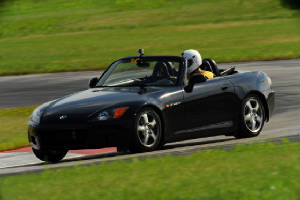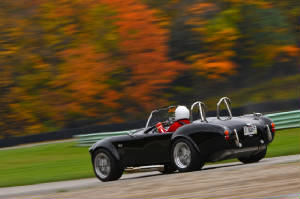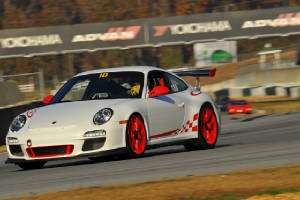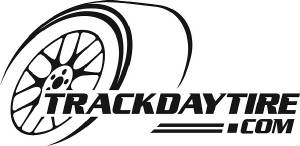|
|
HomeAbout MVP Track Time2026 Track ScheduleRegistrationTrack Day RulesGetting Your Car ReadyTechnical InspectionFrequently Asked QuestionsWhat Are Drivers Saying?Helmets - PLEASE READC.Y.A Stuff (Read This Too)Tracks and Friends LinksPrivacy PolicyGift CertificatesTrack Day PhotosTrack Day VideosFlags - A PrimerAnatomy of a CornerCorporate Event PlanningSponsorship OpportunitiesWanna Host A Track Day?Introduce a Friend to MVPContact MVP Track Time
|
 Getting Your Car Ready for the Track
Now that you've signed up for a track day with MVP
Track Time, you need to prepare your car. The first course of action is to review the "Tech Inspection"
form to gain a clear understanding of what our inspectors will be reviewing to make sure you car is fit for the track. The technical inspection for a track
day are common sense reviews to assure us, the other drivers and yourself your car is in proper working condition. In
the event you are unsure of your steed's condition, any good repair facility can help you determine if any work is necessary
before a track event. Wheels
and Tires: There are only four
small patches of rubber in actual contact with the track surface. Doesn't it make good sense to have the best possible rubber on the road? Your tires should
be in good condition with no cords or
belts showing. The treads, assuming you use street tires, should not be down to the wear indicators. Track tires or slicks too should be in good shape. If
you've had a flat repaired with a plug or patch, I'd
suggest yo consider replacing the tire as these can fail under the loading and heat of a tack day. Wheel covers, beauty rings and center caps should be removed so we
have no flying guillotines flying about the track should they decide to part company with a wheel. Suspension & Steering: The steering should turn easily with no binding as you turn from lock to
lock. There should be no
excessive play in the shock or strut mounts, trailing arms, roll bars or other suspension pieces. Grab each wheel with the car elevated to make sure the wheels don't
move from to side indicating a loose
wheel bearing. If you have loose suspension pick up points, worn suspension bushings or bad bearings, you car will not handle and drive properly. Engine: There should be no leaks from the engine (or any other part
of the car for that matter) allowing liquids to
fall onto the track surface, endangering yourself and fellow drivers. Please make sure you car is not leaking. Make sure your battery is properly secured with a
strap or harness and make sure the battery
posts are covered. Not only will this prevent a battery from arching should it roll over and touch a metal surface, but a flying battery can be deadly. Keep in mind how
much a battery weighs. Brakes and Fluid: Most non-car people ask "How fast does your (FILL IN CAR NAME) go?"
My concern is often how fast can it stop. Your brake system should be in good working order with no leaks. Brake lines are often made of rubber and rubber degrades over time. Make sure your lines have no cracks. A good set of DOT approved braided steel brake lines go a long way to pedal feel. Fluid should be new throughout the brake system. I've seen
clean brake fluid in the reservoir
only to help owners bleed the old fluid from the lines. A brake fluid flush is inexpensive
and can save your life.
Brake pads need to be at least 50%. Like the tires, these are the only things truly stopping your car. Track specification pads
are not necessary but recommended.
Talk to others with similar cars and track experience to determine what may work for your car. Brake lights need to
be properly functioning as well. Safety Equipment: How much is your head worth? A good helmet is an absolute must whether
you intend to do just one track day
or many. The minimum helmet requirements are an SA2020 helmet. An SA rated helmet is Nomex lined to keep you head from catching on fire if the
car should go up in flames. Yes, an SA helmet is more expensive then an "M" helmet but it offers
the added fire protection. Do
not show up with an older SA (pre-SA2020) or M helmet expecting to drive. You will not be allowed on track with a
helmet not meeting these minimums. A fire resistant racing suit is not necessary but recommended. You must
have long pants and long sleeve cotton
clothing on while on track. This offers a modicum of protection in the event of a car fire. Like an SA2020 or newer helmet, the investment in a racing suit
is initially a little high, but amortized
over several years and track events becomes trivial. Closed toe shoes are necessary as well. Those with a rubber sole are a good choice to keep one's
feet from
slipping off pedals. Of course good racing shoes are acceptable as well.
Ideally your car would be equipped with racing harnesses but they are not required. We do require your factory seat belts function properly.
A seat belt lock, like CG-Lock, to hold your seat belt snug is an inexpensive
way to secure your driving position. The
Devil Is In The Details: When
it comes to safety at a track event, the more the merrier. Make sure all loose objects like floor mats, jacks, garage door openers, CDs, cassette tapes, etc.
are removed from your car. A gym
bag makes a nice additon to hold all this while you are on track. Thoroughly clean your windows as the sun can be blinding and
I'd prefer you not run into any other
drivers including your's truly. Clean windows allow you to see your turn in points better as well. Check tire pressures before, during and after a track day.
Most cars will need higher tire pressures
then when driving on the street. Check you owners manual for any references to pressures and speak with other owners of similar cars with track experience. You can tweak there tire pressures throughout the event. After you come off the track from a session, let your car idle
for a few minutes, possibly with the
hood up, allowing the car to cool. Do not use your parking brake as the heat from the pads/rotors may warp your brake rotors.
|
|||||||||||||
|
|











